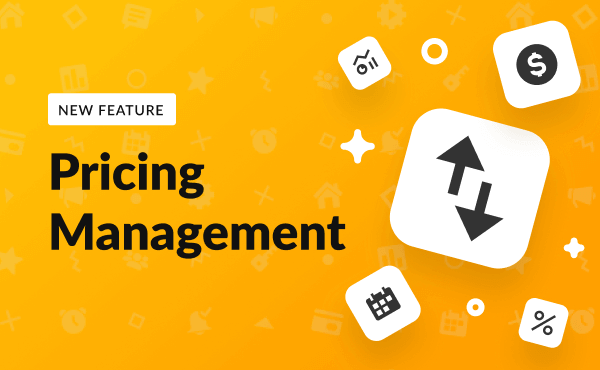The Art of Pricing 'Airbnb One Night' Stays: Tips for Savvy Hosts

As a host, you’ve likely experienced the whirlwind of a one-night stay: the rapid turnaround, the meticulous cleaning, and the late-night messages about check-in times. It’s a scenario familiar to many in the Airbnb community, often seen as more hassle than it’s worth. But what if I told you that these short-term bookings could be a hidden gem in your hosting strategy? Welcome to our discussion on the art of pricing for “Airbnb one night” stays!
In this fast-paced world, where travelers often seek quick getaways or last-minute accommodations, one-night stays are becoming increasingly popular. They offer guests the flexibility they desire, from impromptu weekend breaks to brief business trips.
However, for hosts and property managers, these brief visits pose unique challenges, especially when it comes to setting the right price. Should you charge a cleaning fee for just one night? Is it better to have a slightly higher nightly rate, or should you encourage longer stays with discounts for two or more nights?
These are the questions we’ll explore, diving into the dynamics of one-night stays and how they can boost your occupancy, and potentially, your income.
As we navigate the intricacies of minimum stays, cleaning fees, and the ever-important check-out times, we’ll keep our focus on helping you, the host, find that sweet spot in pricing. Whether you’re managing a cozy room for weekend travelers or a full house for longer stays, understanding the nuances of pricing can make a world of difference. So, let’s embark on this journey together, turning the potential trouble of one-night stays into more bookings and happier guests. Grab a cup of coffee, and let’s dive in!

Understanding the Market for One-Night Stays
In our quest to master the art of pricing for one-night stays, it’s crucial to first understand the market we’re diving into. One-night stays are not just a booking type; they’re a reflection of the ever-evolving travel and accommodation trends. Let’s peel back the layers and see what really drives guests to book these quick visits.
Should you allow Airbnb bookings for one night?
One-night stays often mean more frequent cleanings and turnovers, which can increase your workload and costs. If you’re able to efficiently manage these aspects without significantly impacting your profit or personal time, one-night bookings might be feasible.
If your main goal is to keep your rental as occupied as possible, accepting one-night bookings can help fill in gaps between longer stays. This increased occupancy can lead to greater overall revenue, even if each individual booking is shorter. It’s particularly beneficial in high-demand areas or during peak travel seasons when the likelihood of back-to-back one-night bookings is higher.
Pros:
- Increased Occupancy Rates: As mentioned, one-night bookings can significantly boost your occupancy rates. This is particularly advantageous during off-peak seasons or weekdays when longer bookings are less frequent.
- Diverse Guest Base: Short stays open your doors to a wider variety of guests, including last-minute travelers, business professionals, or those passing through. This diversity not only increases booking chances but can also enrich your hosting experience.
- Higher Per-Night Rate Potential: You might have the opportunity to charge a slightly higher rate per night for short stays. Guests are often willing to pay a premium for the convenience of a one-night booking.
- Increased Visibility on Airbnb: Frequent bookings can improve your listing’s visibility and search ranking on Airbnb, potentially attracting more guests in the long run.
- Networking Opportunities: One-night guests, especially business travelers, can provide networking opportunities and may become repeat customers if they frequently visit your area.
Cons:
- Higher Turnover Costs and Effort: More frequent cleanings and the need for quick turnovers can increase operational costs and effort. This includes laundry, restocking essentials, and potential wear and tear.
- Inconsistent Revenue Streams: While one-night stays can fill gaps, they may lead to a less predictable and consistent revenue stream compared to longer bookings.
- Potential for Lower-Quality Reviews: Guests staying for only one night may not fully experience all your property has to offer, possibly leading to less thorough or favorable reviews.
- Stringent Scheduling: Managing check-in and check-out times can be more challenging, as you’ll need to coordinate these times tightly between guests.
Despite these challenges, the advantages of accepting one-night stays can outweigh the cons, especially when managed effectively. With the right strategies in place, such as using dynamic pricing to adjust rates for short stays or employing efficient cleaning and turnover systems, you can mitigate many of the cons associated with one-night bookings.
Additionally, the increased visibility and occupancy rates that come with accepting short stays can significantly enhance your overall Airbnb business. It’s about finding the right balance that works for your hosting style and property. For many hosts, the opportunity to maximize bookings and cater to a broader audience makes one-night stays a compelling option, even with the added logistical considerations.
Current Trends in Short-Term Rentals
The world of short-term rentals is as diverse as the travelers who use them. In recent years, we’ve seen a surge in ‘one-nighters’ – people looking for a place to crash for a night, often due to last-minute travel plans or a desire for a brief change of scenery. This trend is particularly noticeable on weekends or during popular travel seasons when the demand for a night or two of accommodation spikes. Whether it’s a spontaneous road trip, a business traveler in town for a quick meeting, or someone extending their trip by just a day, these guests are looking for flexibility and convenience.
Who Are the One-Night Guests?
Understanding who these guests are is key to tailoring your Airbnb listing to meet their needs. Typically, one-night guests might be business travelers, couples on a short getaway, or solo travelers exploring a new city. They value location, ease of check-in, and the efficiency of their stay. They’re not just looking for a room; they’re seeking an experience that fits their fast-paced trip.
Impact of Location and Seasonality
Your approach to pricing for one-night stays will largely depend on your Airbnb’s location and the time of year. If you’re in a city that’s a hot destination for concerts, festivals, or conferences, you’ll likely see a higher demand for short stays. The same goes for properties near airports or major transit hubs. Seasonality plays a big role too. During peak tourist seasons, or on weekends, the demand for short stays can skyrocket, presenting an opportunity for hosts to adjust their pricing strategies accordingly.
Competition and Market Analysis
Keep an eye on your competition. How are other hosts in your area pricing their one-night stays? Are they offering special deals for quick bookings or adding incentives like reduced cleaning fees for single-night reservations? A little market research can go a long way in understanding how to position your listing.
Adjusting to Guest Expectations
Remember, guests booking one-night stays often have different expectations than those booking longer stays. They might be more price-sensitive, given the short duration of their stay, or they might be willing to pay a bit more for the convenience of a well-located property or a hassle-free check-in process.
Understanding the market for one-night stays is like putting together a puzzle – it requires a keen eye on trends, guest preferences, and the ever-changing dynamics of the travel industry. By aligning your pricing strategy with these factors, you can turn the challenge of one-night bookings into an opportunity to maximize your bookings and cater to a diverse range of travelers. Up next, we’ll delve into the nitty-gritty of dynamic pricing versus flat rates, and how to strike the perfect balance for your Airbnb listing.
Dynamic Pricing vs Flat Rates
What is Dynamic Pricing?
In a nutshell, dynamic pricing means adjusting your rates based on current market conditions. Think of it like a seesaw; during peak seasons, big events, or even busy weekends, your prices might go up, reflecting the higher demand. Conversely, during slower periods, your prices might dip to attract more bookings.
The Benefits:
This method can maximize your income during high-demand periods, ensuring you’re not leaving money on the table. It’s particularly effective for locations with fluctuating tourist seasons or for properties near major event venues.
The Consideration:
Dynamic pricing requires you to stay on top of market trends, local events, and even the booking patterns of your competition. It can be a bit of a juggling act, but thankfully, there are tools and software that can help automate this process.
Flat Rates: The Simplicity of Consistency
- Understanding Flat Rates: A flat rate means your price per night stays the same, regardless of the season or demand. It’s straightforward, easy for guests to understand, and offers a sense of transparency and trust.
- Why Go Flat? If your Airbnb sees consistent demand year-round, or if you’re in a location not heavily influenced by seasonal swings, a flat rate might be your ticket to steady bookings. It’s also less time-consuming to manage, as you’re not constantly adjusting prices.
- The Downside: The main risk here is missing out on potential revenue during peak times. You might also find your property booked out well in advance for peak dates, leaving you with gaps during the slower periods.
Which One Suits You? Choosing between dynamic pricing and flat rates often boils down to your specific circumstances. Consider factors like your location, the typical length of stay for your guests (do you often get ‘three-nighters’ or mostly ‘one-night stays’?), your willingness to actively manage your pricing, and how sensitive your target market is to price fluctuations.
Remember, there’s no one-size-fits-all answer here. Some hosts even find a hybrid approach works best – a base flat rate with dynamic adjustments during certain high-demand periods. It’s all about finding what aligns with your hosting style and business goals.

Setting the Right Price for a One-Night Stay
It’s time to talk numbers. Setting the right price for one-night stays is a bit like Goldilocks finding the perfect bowl of porridge – it’s all about hitting that ‘just right’ spot. Let’s break down the key factors to consider when pricing your one-night stays, ensuring they’re attractive to guests and profitable for you.
Balancing Act: Cost, Competition, and Value
First things first, know your numbers. This includes your cleaning fees, laundry expenses, utilities, and any other costs associated with hosting. For one-night stays, these costs can add up quickly, so it’s crucial to factor them into your pricing.
What are other hosts in your area charging for similar accommodations? Remember, guests often shop around, especially for shorter stays. Your nightly rate needs to be competitive, but also reflective of what you offer. Is your place a cozy room perfect for a quick break or a luxurious property ideal for a special one-nighter?
Consider what makes your listing stand out. Maybe it’s your super-convenient location, outstanding amenities, or the extra effort you put into making guests feel welcome. These unique selling points should be reflected in your pricing.
Pricing Strategies for One-Night Stays
- Dynamic vs. Flat Rates Revisited: With a clearer understanding of your costs and competition, decide if a dynamic or flat rate better suits your one-night stay strategy. Remember, dynamic pricing can help capitalize on high-demand periods, while flat rates offer simplicity and consistency.
- Peak vs. Off-Peak: Adjust your rates for peak seasons, weekends, and special events. Higher prices during these times are generally accepted by guests due to increased demand.
- Last-Minute Bookings: Consider offering a slightly lower rate for last-minute bookings to fill empty slots. This can be especially effective for one-night stays, appealing to impromptu travelers.
Transparency and Communication
- Clear Pricing Information: Ensure your listing clearly states your pricing, including any additional fees like cleaning charges or extra guest fees. Transparency builds trust and reduces the chances of misunderstandings with guests.
- Effective Communication: Use your listing’s description and communication with potential guests to highlight the value they’re getting for the price. Whether it’s your unbeatable location, flexible check-in/check-out times, or the cozy comfort of your space, make sure guests know what makes your Airbnb worth their investment.
Regular Reviews and Adjustments
- Stay Updated: Regularly review and adjust your pricing based on feedback, occupancy rates, and changes in local demand. What works today may need tweaking tomorrow.
- Feedback Loop: Don’t hesitate to ask departing guests about their perception of value for money. This direct feedback can be incredibly insightful for future pricing decisions.
Setting the right price for one-night stays on Airbnb isn’t a ‘set and forget’ task. It’s a dynamic process that involves understanding your costs, staying competitive, and communicating the unique value of your listing.
Additional Fees and Discounts
Moving on to an equally important aspect of pricing a single-night stay: navigating the world of additional fees and discounts. This is where you can fine-tune your pricing strategy to be both appealing to guests and beneficial for your business. Let’s dive into how you can smartly implement these to enhance your Airbnb offering.
Decoding Additional Fees
The Cleaning Fee Conundrum: The cleaning fee is a critical consideration. While it’s essential to cover your cleaning costs, setting this fee too high might deter guests looking for a short stay. Strike a balance that fairly compensates for the cleaning efforts without overburdening your guests.
Extra Charges: Other additional fees might include things like a security deposit, extra guest fees, or pet fees. Be transparent about these in your listing, and ensure they are in line with the norms in your area and the value offered by your property.
Crafting Discounts for Attractiveness
Encouraging Longer Stays: While one-night stays are our focus, offering a slight discount for bookings of two or more nights can encourage guests to extend their stay, increasing your revenue and reducing turnover.
Last-Minute Deals: Consider offering a small discount for last-minute bookings. This can be a great way to fill up those otherwise empty nights, appealing to spontaneous travelers or those on a tight schedule.
Off-Peak Incentives: During slower seasons or mid-week days when demand dips, a discount can make your listing more attractive. This helps maintain a steady flow of guests, even during the typically quieter periods.
Ethical and Transparent Pricing
Clear Communication: Always ensure that any additional fees or discounts are clearly communicated in your listing. Surprises when it comes to money can lead to unhappy guests and negative reviews.
Fair Pricing: While it’s important to run a profitable business, consider the guest perspective in your pricing strategy. A fair and transparent approach not only attracts more guests but also fosters trust and can lead to repeat bookings.
Regularly Reviewing Your Pricing Strategy
Stay Informed: Keep an eye on your competition and the broader market trends. What additional fees are they charging? What kinds of discounts are proving effective? Use this information to inform your own pricing strategy.
Adaptability: Be ready to adjust your fees and discounts as the market changes. What works in the high season may not be suitable for quieter months. Stay adaptable and responsive to market dynamics.
Implementing additional fees and discounts is a delicate balancing act. It requires understanding your costs, the market, and your guests’ expectations. Done right, it can make your listing more appealing and help you manage the financial aspects of hosting more effectively.
Leveraging Technology and Tools for Pricing
Staying ahead with pricing strategies can be a breeze with the right tools and technology. Leveraging these resources not only simplifies your life as a host but also ensures you’re optimizing your revenue potential. Let’s dive into how the right tool can revolutionize your pricing approach for short-term rentals.
PriceLabs and Beyond Pricing: These tools specialize in dynamic pricing solutions, offering market-driven insights to adjust your rates. Integrating iGMS with PriceLabs or Beyond Pricing means you can automate your pricing strategy based on extensive market data, seasonal trends, and demand forecasts.
Doinn for Cleaning and Maintenance: Efficiently managing turnovers, especially for brief stays, is crucial. Doinn automates the coordination of cleaning and maintenance services, ensuring your property is always guest-ready. This integration helps in effectively factoring cleaning costs into your overall pricing strategy.

Final Thoughts
As we bring this deep dive to a close, let’s take a moment to recap the key strategies and tips we’ve discussed. Remember, the goal is to find a pricing strategy that not only maximizes your earnings but also aligns with the unique qualities of your property and the needs of your guests.
- Understanding the Market: Recognize the trends and demands for short-term rentals in your area. Keep an eye on local events, seasonality, and guest preferences.
- Dynamic Pricing vs. Flat Rates: Consider the pros and cons of each. Dynamic pricing can maximize earnings during peak times, while flat rates offer simplicity and consistency.
- Setting the Right Price: Balance costs, competition, and the unique value your property offers. Be competitive, but also fair and transparent.
- Additional Fees and Discounts: Implement fees like cleaning charges judiciously and consider discounts for longer stays or off-peak periods.
- Leveraging Technology and Tools: Utilize tools like iGMS and its partners, such as PriceLabs and Beyond Pricing, for data-driven pricing decisions and efficient management.
Each property is unique, and what works for one might not work for another. We encourage you to experiment with different pricing strategies, taking into account the unique aspects of your property and the preferences of your target guests. Remember, flexibility and adaptability are key in the ever-changing landscape of Airbnb hosting.
To dive deeper into these strategies and discover more about optimizing your Airbnb business, we invite you to try out iGMS. Our platform is designed to make your hosting journey smoother and more profitable. Additionally, check out our other articles on pricing and property management for more insights and tips.
Your journey toward becoming a savvy Airbnb host is just beginning, and with the right tools and strategies, the possibilities are endless. Explore, experiment, and excel in your hosting endeavors!
About the Author
Danielle Kruger is the Content Manager at iGMS. She is an avid reader and researcher of all things travel, always trying to keep her finger on the pulse of the latest trends and innovations. A self-proclaimed nerd, in her free time Dani enjoys reading, rollerskating, and dabbling in tabletop RPGs.





![Your Monthly iGMS Roundup [February 2020]](/content/images/size/w600/wordpress/2020/02/igms-roundup-feb-2020-cover.png)

